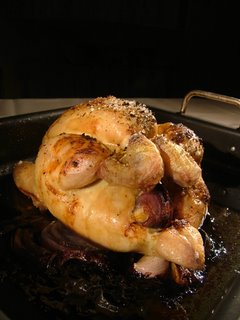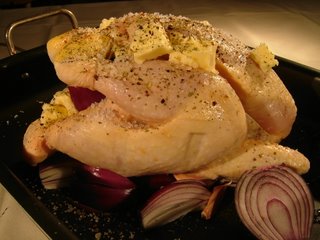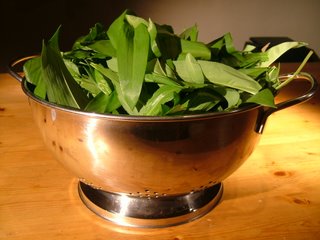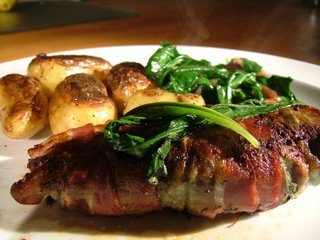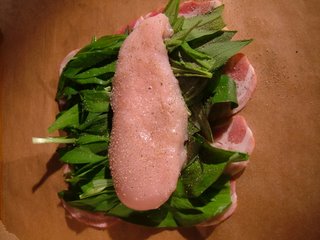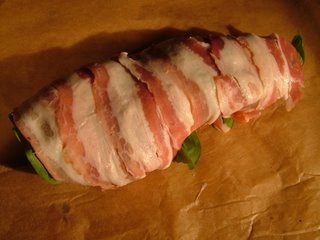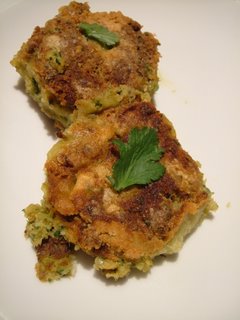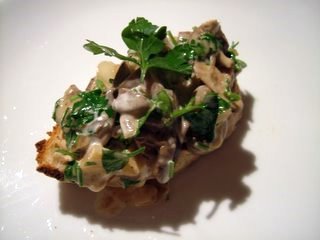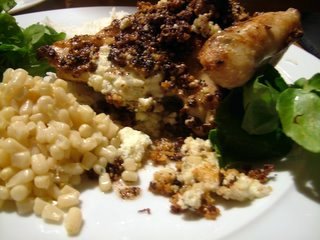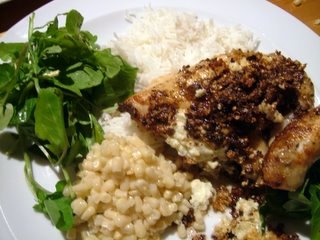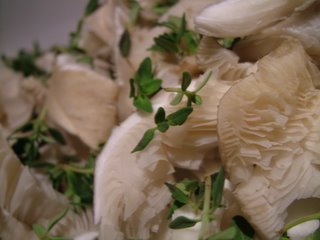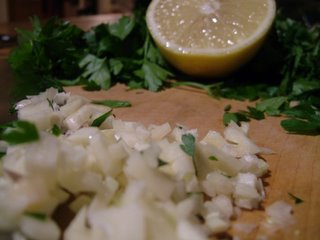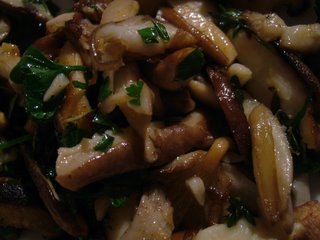Thai green curry is fierce stuff. A green chicken curry is also pretty easy to make at home; with half an hour to spare you can produce a wok full of searingly hot, aromatic deliciousness.
Although you can make your own curry paste from spices and fermented fish paste at home, I’ve found that Mae Ploy’s green curry paste is so good and so convenient I don’t bother any more. Some UK supermarkets stock it (I’ve seen it in Waitrose and Sainsbury’s), you’ll find it in oriental supermarkets as a matter of course, and it’s available online in the UK and through Amazon in the US, where you can buy things to eat while you read your books. Please do not believe what it says on the pot. If you use three tablespoons of this extremely hot paste in a curry of this size, you’ll lose sensation in most of your digestive tract for the rest of the evening (which may be a blessing). I love hot curries, but there’s a point past which even my tastebuds refuse to go.
To serve two you’ll need:
1 can coconut milk
2 tablespoons Mae Ploy green curry paste
2 large chicken breasts, boned and skinned
8 small aubergines, halved, or one large one cut into pieces
1 small can bamboo shoots
1 tablespoon palm sugar (substitute soft brown sugar if you can’t find any)
5 kaffir lime leaves, torn
2 tablespoons fish sauce
1 handful basil leaves
I couldn’t find any kaffir lime leaves – they’d sold out at the Malaysian supermarket I went to in London at the weekend, so I used the pared zest of a lime instead. If your supermarket stocks Bart’s Spices, you should be able to find freeze-dried kaffir lime leaves, which work very well.
I like to use Chaokoh coconut milk (Americans can find it here, and Brits here; it’s very inexpensive and extremely useful in the kitchen, so stock up on plenty). It’s something Rosemary Brissenden’s excellent South East Asian Food put me onto; when cooking a Thai curry, you need to look out for a coconut milk like Chaokoh, without emulsifiers, thickeners and God knows what else. This is because you’ll be cooking with the thick part of the milk, which will float to the top of the can, until it separates and releases its oil – in a coconut milk with added gubbins, the oil will never separate out, no matter how much you cook it. You need this oil for flavour, and because it’s the fat you’ll be ‘frying’ the curry’s ingredients in.
Chop all your ingredients before you start. Put the thick, solid part of the coconut milk in the wok (about half a can of a watery-looking liquid will remain in the can), and cook it, stirring, over a high flame until it is bubbling and the oil has separated from it. Add two tablespoons of curry paste to the wok and carry on stirring until the paste no longer smells harsh and raw – you’ll notice a mellow, aromatic fragrance starts to develop.
Add the chicken to the wok and continue to ‘fry’ until the meat has all changed colour. As you stir, add the remaining liquid from the coconut can, a tablespoon at a time. Add the sugar, fish sauce, lime leaves or zest and vegetables to the wok and turn the heat down. Simmer for about eight minutes, until the meat and vegetables are cooked through and the sauce has thickened a little. Taste a little of the sauce to check the seasoning and adjust if you want to.
Take the wok off the heat and stir in a large handful of basil, torn roughly. Thai basil is much more fragrant, with a delicious edge of anise, but if you can’t find any, the European sort will be fine. Serve on top of a bowl of rice, and make sure you allow plenty of the delicious sauce to soak into the rice.

